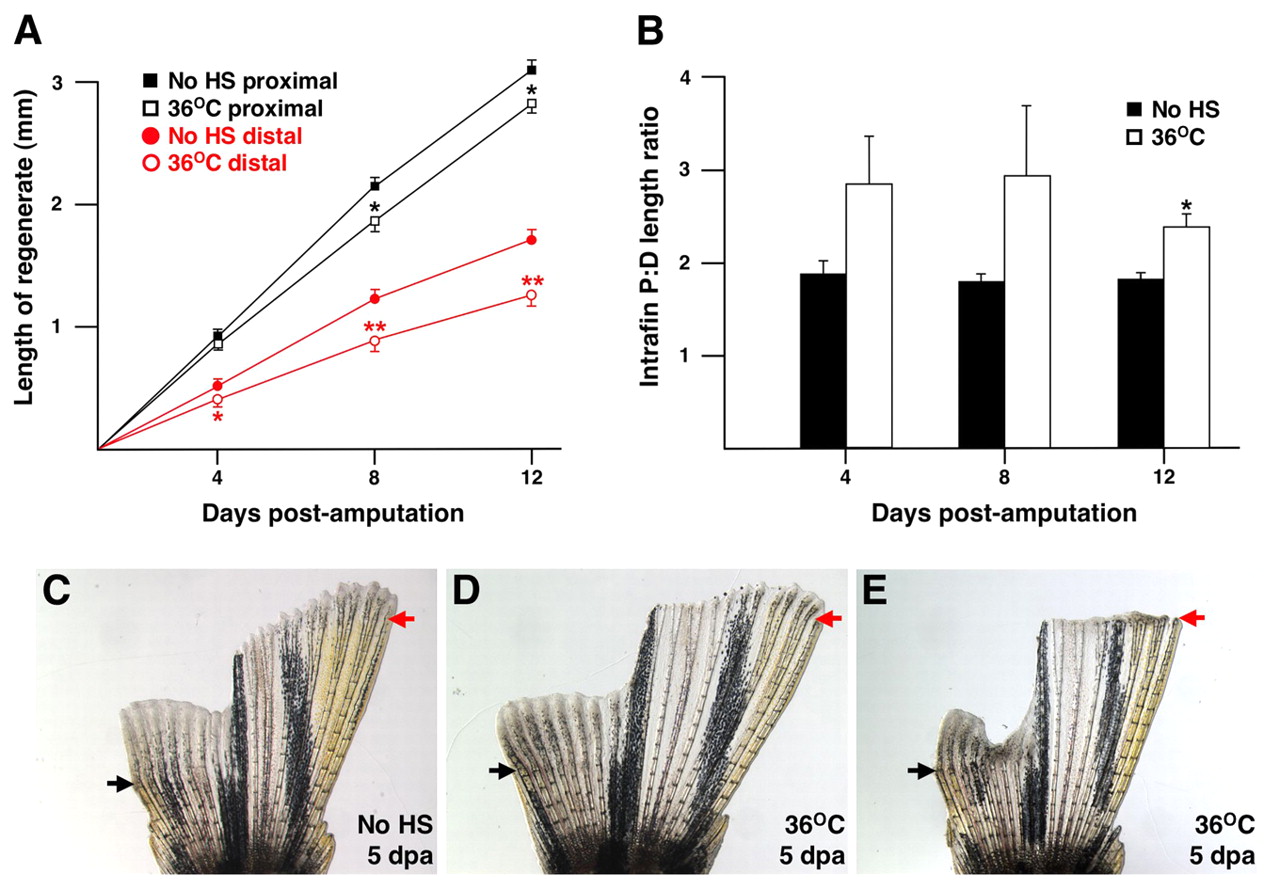Fig. 7 Regenerative growth in distal fin regenerates is more sensitive to partial Fgfr inhibition than proximal regenerative growth. (A) Daily exposure of double-amputated hsp70:dn-fgfr1 zebrafish to 36°C heat shock has a significant effect on the growth of proximal and distal fin regenerates. Measurements were averaged from 18 untreated and 21 36°C-treated animals (*P<0.05, significantly different from no HS, t-test: **P<0.001, significantly different from no HS, t-test). (B) Graph of intrafin proximal to distal length ratios using animals described in A. The higher proximal:distal length ratio in 12 dpa 36°C heat-shocked animals indicates a greater sensitivity of distal regenerative growth to partial Fgfr inhibition (*P<0.001, significantly different from no HS, t-test). (C-E) Representative transgenics at 5 dpa given no HS (C) or 36°C heat shocks (D,E). Arrows indicate points of amputation. Some 36°C transgenics appeared similar to untreated transgenics at early timepoints such as 5 dpa (D), while others showed especially poor distal regeneration (E). Such variability is also reflected by the large standard error bars in B that characterize 36°C P:D ratios at 4 and 8 dpa.
Image
Figure Caption
Acknowledgments
This image is the copyrighted work of the attributed author or publisher, and
ZFIN has permission only to display this image to its users.
Additional permissions should be obtained from the applicable author or publisher of the image.
Full text @ Development

